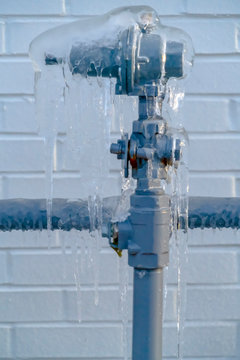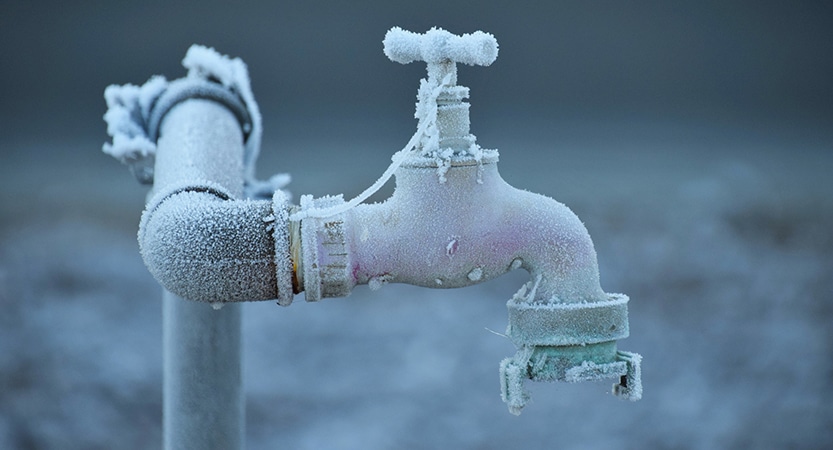On this page in the next paragraphs you will discover more very good points on the subject of How to Prevent Your Pipes From Freezing.

Winter can wreak havoc on your plumbing, specifically by freezing pipelines. Here's exactly how to stop it from taking place and what to do if it does.
Introduction
As temperature levels decrease, the risk of frozen pipelines rises, potentially causing pricey repair work and water damage. Recognizing exactly how to stop frozen pipes is crucial for home owners in chilly climates.
Understanding Icy Pipelines
What triggers pipelines to ice up?
Pipelines ice up when subjected to temperatures below 32 ° F (0 ° C) for extended periods. As water inside the pipelines freezes, it increases, putting pressure on the pipeline wall surfaces and possibly creating them to rupture.
Threats and damages
Frozen pipelines can bring about water supply interruptions, residential or commercial property damages, and costly repairs. Burst pipes can flood homes and cause substantial structural damage.
Signs of Frozen Water Lines
Determining icy pipes early can prevent them from breaking.
Just how to identify frozen pipelines
Look for lowered water circulation from faucets, uncommon odors or sounds from pipelines, and visible frost on revealed pipes.
Prevention Tips
Shielding susceptible pipes
Wrap pipes in insulation sleeves or utilize warm tape to shield them from freezing temperature levels. Concentrate on pipelines in unheated or external areas of the home.
Heating methods
Maintain interior spaces appropriately warmed, specifically locations with pipes. Open up cupboard doors to enable cozy air to flow around pipes under sinks.
Shielding Exterior Pipes
Garden pipes and exterior faucets
Detach and drain pipes garden hoses before wintertime. Set up frost-proof spigots or cover outside taps with protected caps.
What to Do If Your Pipelines Freeze
Immediate actions to take
If you presume icy pipelines, keep taps open up to eliminate pressure as the ice thaws. Make use of a hairdryer or towels soaked in hot water to thaw pipes slowly.
Long-Term Solutions
Architectural changes
Think about rerouting pipelines far from exterior wall surfaces or unheated areas. Add extra insulation to attics, cellars, and crawl spaces.
Updating insulation
Purchase premium insulation for pipes, attic rooms, and walls. Correct insulation assists keep regular temperatures and reduces the threat of frozen pipelines.
Verdict
Avoiding frozen pipes calls for proactive measures and quick reactions. By recognizing the reasons, indicators, and safety nets, homeowners can secure their pipes throughout winter.
5 Ways to Prevent Frozen Pipes
Drain Outdoor Faucets and Disconnect Hoses
First, close the shut-off valve that controls the flow of water in the pipe to your outdoor faucet. Then, head outside to disconnect and drain your hose and open the outdoor faucet to allow the water to completely drain out of the line. Turn off the faucet when done. Finally, head back to the shut-off valve and drain the remaining water inside the pipe into a bucket or container. Additionally, if you have a home irrigation system, you should consider hiring an expert to clear the system of water each year.
Insulate Pipes
One of the best and most cost-effective methods for preventing frozen water pipes is to wrap your pipes with insulation. This is especially important for areas in your home that aren’t exposed to heat, such as an attic. We suggest using foam sleeves, which can typically be found at your local hardware store.
Keep Heat Running at 65
Your pipes are located inside your walls, and the temperature there is much colder than the rest of the house. To prevent your pipes from freezing, The Insurance Information Institute suggests that you keep your home heated to at least 65 degrees, even when traveling. You may want to invest in smart devices that can keep an eye on the temperature in your home while you’re away.
Leave Water Dripping
Moving water — even a small trickle — can prevent ice from forming inside your pipes. When freezing temps are imminent, start a drip of water from all faucets that serve exposed pipes. Leaving a few faucets running will also help relieve pressure inside the pipes and help prevent a rupture if the water inside freezes.
Open Cupboard Doors
Warm your kitchen and bathroom pipes by opening cupboards and vanities. You should also leave your interior doors ajar to help warm air circulate evenly throughout your home.

As a person who reads about Preventing and dealing with frozen pipes, I assumed sharing that segment was smart. Don't hesitate to set aside a second to promote this write-up if you liked it. I value your readership.
Call Today